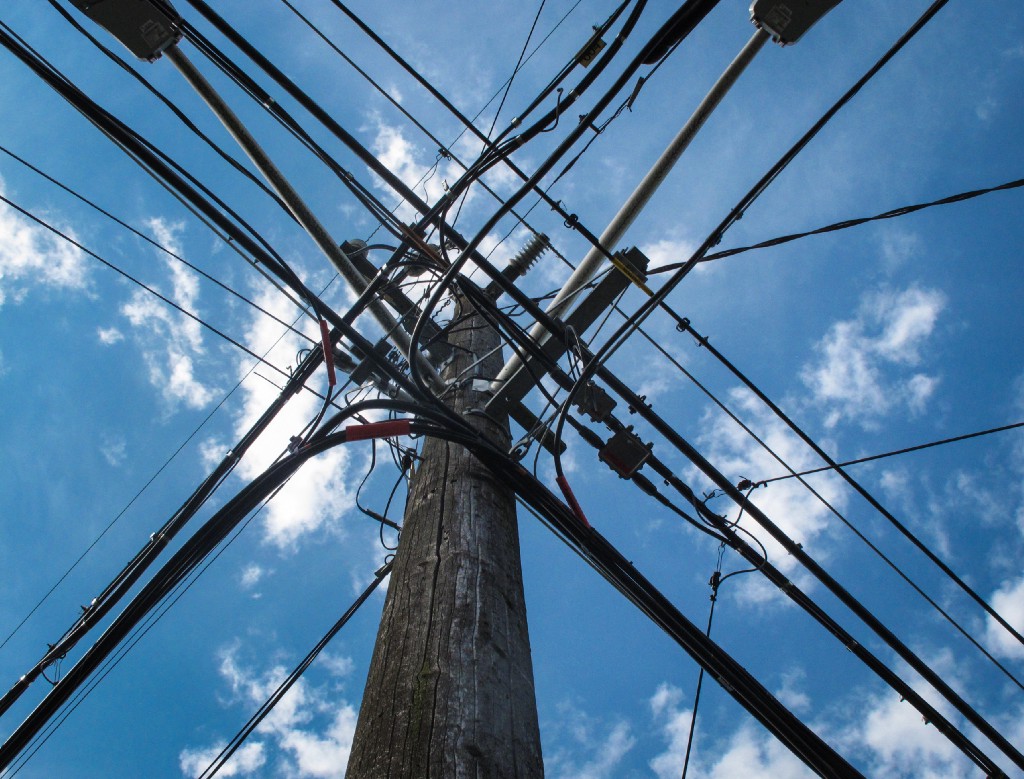2030
Solar, minigrids and battery storage change the game for 21st century infrastructure

(with Adrienne Day)
Way back in 2017, Puerto Rico’s electric grid was a mess. A dozen years later: the island has universal, abundant, clean and cheap electricity.
While devastated in the short term, Puerto Ricans turned Hurricane Maria into an opportunity to rebuild its electricity infrastructure on a 21st century model.
Leapfrogging the archaic electricity infrastructure still in use in some parts of the world, Puerto Rico now has universal, clean, cheap and resilient electric service with the kind of hybrid networked mini-grids now in use around the world.
Compared to what?
Granted, that’s a best-case scenario for 2030. Is it likely? Perhaps not. But is it possible? Consider:
Puerto Rico’s utility company, PREPA, was bankrupt even before the storm. When Maria knocked out most of PREPA’s poles, plants, and substations, the electricity infrastructure had to be rebuilt one way or another.
In stepped a variety of non-state actors, such as Tesla’s Elon Musk, who offered to do what he had done for the Samoan island of Ta’u, where 60 Tesla Powerpacks powered the island for three days without sun. Musk had also jumped into an urgent situation in Australia, rashly promising to deliver storage for 100 megawatts of battery-power storage in 100 days, or write off the approximately $66 million cost. He delivered.
body[data-twttr-rendered=”true”] {background-color: transparent;}.twitter-tweet {margin: auto !important;}
Great initial conversation with @elonmusk tonight. Teams are now talking; exploring opportunities. Next steps soon to follow.
function notifyResize(height) {height = height ? height : document.documentElement.offsetHeight; var resized = false; if (window.donkey && donkey.resize) {donkey.resize(height); resized = true;}if (parent && parent._resizeIframe) {var obj = {iframe: window.frameElement, height: height}; parent._resizeIframe(obj); resized = true;}if (window.location && window.location.hash === “#amp=1” && window.parent && window.parent.postMessage) {window.parent.postMessage({sentinel: “amp”, type: “embed-size”, height: height}, “*”);}if (window.webkit && window.webkit.messageHandlers && window.webkit.messageHandlers.resize) {window.webkit.messageHandlers.resize.postMessage(height); resized = true;}return resized;}twttr.events.bind(‘rendered’, function (event) {notifyResize();}); twttr.events.bind(‘resize’, function (event) {notifyResize();});if (parent && parent._resizeIframe) {var maxWidth = parseInt(window.frameElement.getAttribute(“width”)); if ( 500 < maxWidth) {window.frameElement.setAttribute("width", "500");}}
The plummeting cost of battery storage was key. Also important was new technology that enabled a single storage system to provide a wide range of services, such as charging vehicles and powering homes.
With the growth in storage, microgrids proved to be flexible, responsive systems that communities — in Puerto Rico, other island nations, and many parts of sub-Saharan Africa, South and Southeast Asia — could quickly install and own to provide their own power.
What might a 'solar' Disaster 4R package cost/look like for Puerto Rico?
In the U.S. alone in 2030, 150 million people in the U.S. were expected to obtain power from mini-grids, according to the International Renewable Energy Agency.
https://medium.com/media/6c98c9e494e50ea5d479f3d61da487eb/href











